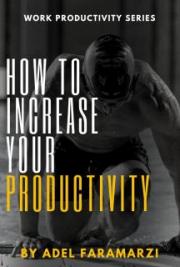FOOTNOTES
[1] (Romano Sancho, political activist, community organizer
and farmer; Rodolfo León, local farmer and community leader; Julio Jiménez,
Municipality employee and part time farmer; Francisco Mejía (Pito), teacher;
Paulina Chaverri, university graduate in history; Luis Fernando Chacón, graphic
artist; and Mario Sandí, local farmer and manager of the farmers' cooperative).
[1] This physiological metaphor Romano employs has the
meaning of antagonists.
[1] Foundations, unlike Associations, are required by law in
Costa Rica to have one representative of the Executive Branch and one
representative of the Municipal government on the Directive Board. This allows greater State control over the
activities of foundations.
[1] According to several elder farmers I interviewed who
knew Jorge Zeledón, he accumulated land through usurious practices with local
small farmers, and other unscrupulous methods, such as obtaining signatures
from drunken farmers, and by having his peons claim homesteads in the moutains,
which they then turned over to Zeledón for a pittance.
[1] These physical resources, unlike social and cultural
capital which increase when used, resemble more a finite pie, where the piece
that goes to one, is taken away from the other.
[1] In 1989 the members of COPROALDE were: CEDECO
(Corporación Educativa para el Desarrollo Costarricense); EL PRODUCTOR
(Servicios Técnicos y Profesionales El Productor); TEPROCA (Taller Experimental
de Producción y Comercialización Agrícola Alternativa; CICDAA (Consultoría de
Investigación y Capacitación para un Desarrollo Agrario Alternativo); CECADE
(Centro de Capacitación para el Desarrollo); and EconoAgro El Sembrador.
[1] During this period two other organizations also joined
COPROALDE: CENAP (Centro Nacional de Acción Pastoral), and GUILOMBE (Fundación
Güilombé para la Communicación y la Agricultura Biológica). In contrast, three of the original members left COPROALDE: CICDAA,
CECADE and Econoagro El Sembrador. Soon
after, COPROALDE promoted the creation of an organization of its beneficiaries,
ANAPAO (Asociación Nacional de Pequeños Agricultores Orgánicos), which became
the seventh member of the network.
[1] The participants of the NGO meeting were:
Organization Person
ACECAN James
Siu
ACJ Fernando
Lara
ADEHUCO Julio
Acuña
AECO Jaime
Bustamante
AECO Jorge
Polimeni
AECO Oscar
Fallas
APDE José
Luis Castillo
ASEPROLA Mariano
Sainz
CECADE Alexander
Loynaz
CECADE William
Reuben
CEDECO Wilberth
Jiménez
CODECE Felipe
Montoya
Colectivo Pancha Carrasco Lily
Quesada
Colectivo Pancha Carrasco Tita
Escalante
Coordinadora de Barrios Mario
Céspedes
COPROALDE Paulina
Chaverri
FECON Isabel
MacDonald
Fundación Güilombé Cileke
Comanne
Fundación Güilombé Javier
Bogantes
ICAL Victor
Vega
JUNAFORCA Franklin
Rodríguez
Universidad Nacional-ECA Eduardo
Mora
VECINOS Juan
Manuel Castro
[1] At this point CONAO was made up of the 170 organizations
that participated in the National Assembly.
These included individual grassroots organizations and NGOs, such as
AECO, CODECE, and CECADE, as well as networks of organizations, such as
COPROALDE and others.
[1] Economists might try to counter my argument of the
subtractable nature of economic capital, pointing out the obvious fact that
economic capital, too, may be invested and reproduced, virutally ad
infinitum. However, this refers to the
"end-products" of investing economic capital, and not to the initial
amount, which is finite and not immediately reproducible. Social and cultural capitals, in contrast,
are not immediately subtractable. In presenting a friend to others, I don't
lose that friend. By giving out
information to others, I am not suddenly deprived of it.
[1] In January of 1999, by chance I ran into Jorge Coronado
who had been the Secretary General of CONAO during most of its existence. I asked him about the fate of CONAO and he
recounted how in CONAO's last National Assembly in 1998, its membership had
completely changed, taken up, ironically, by large mainstream NGOs in line with
State policies and the business sector.
[1] See chapter 9.
[1] For instance, following Gerardo Burro's example, other
people in Escazú also began to partake of their town's tradition, making
payazos, themselves.
[1] On a very personal note, for example, my work in CODECE
inspired me to set up the MILPA Foundation in Escazú, for the recovery and
protection of heirloom seeds and related local knowledge.







